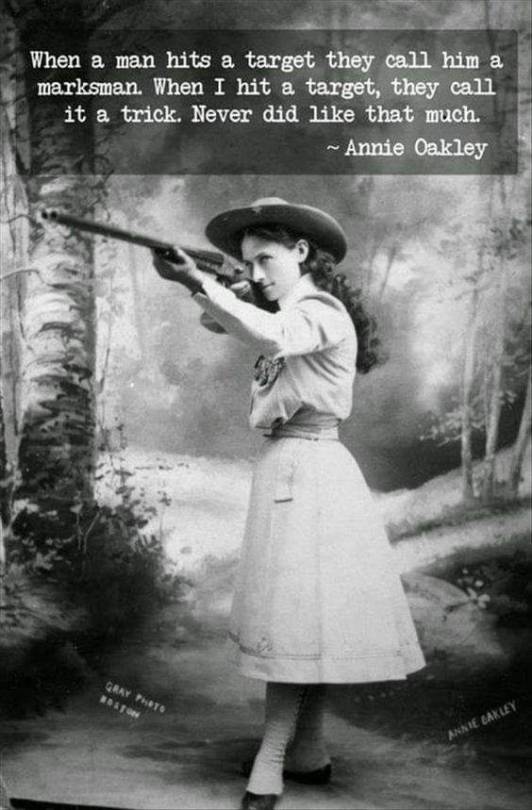#badasses of history
Text
It's so funny that The Secret History, a book where everything goes wrong because of the characters' obsession with beauty and aestheticism is Tiktok's favourite book because it's aesthetic though.
Like, all of the characters lie and do very unhealthy things for the sake of beauty and appearances and then the most beauty-obsessed social media ever decides it's its favourite book because it gives picturesque college vibes, which is exactly why Richard joined the Greek class in the first place.
#the secret history#donna tartt#tiktok#booktok#richard papen#it's the same lack of self-awareness as men liking satires about toxic masculinity without seeing what it's about#because “the main character is so badass and manly
592 notes
·
View notes
Text
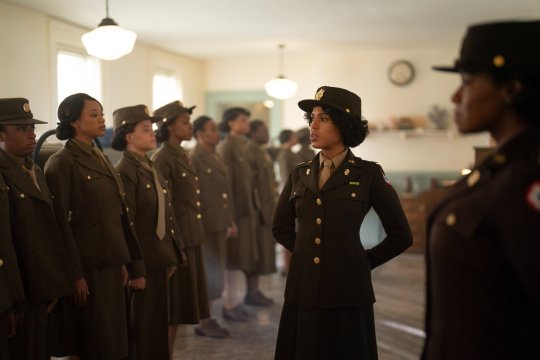

Our first teaser for the Six Triple Eight movie was included in Netflix's 2024 upcoming releases promo!!
For those who don't know, the Six Triple Eight is about the 6888th Central Postal Battalion which was the all POC regiment of the Women's Army Corps during World War II. They served in England sorting through the massive backlog of mail that had accumulated. Receiving mail from home was such an important morale boost for the men and high morale wins wars so sorting this mail was a priority. It was a nearly impossible task that the Army predicted would take them years to accomplish but they completed the task in half the time, processing 17 million pieces of mail and sending them to soldiers awaiting news from home. They worked in cold, dirty, dark rat infested aircraft hangars with broken windows. They were so good at their work that the unit was sent to several other areas to do the same thing. The unit was active from 1945 to 1946 and consisted of 855 women under the Command of Major Charity Adams, Captains Mary F. Kearney and Bernice G. Henderson. Their nickname was “Six-Triple Eight" and their motto was “No Mail, Low Morale."
I'm so excited for this film, you have no idea. An entire movie completely focused on telling the story of women. And not just women, black women! It's so exciting! And it looks fantastic just from this short teaser. I know the historical consultant of the show personally and she knows WAC history better than anyone and it definitely shows. The uniforms are pretty perfect. The only mistake I've seen so far, which is in a behind the scenes photo, is the utility bag (their purse) is on the wrong side. But that's a nit picky complaint from me I can overlook. But even the shots are so good!! They're recreating at least one original image I can think of. Which is so cool. God I'm so excited!!!!
Here are some original images of the 6888
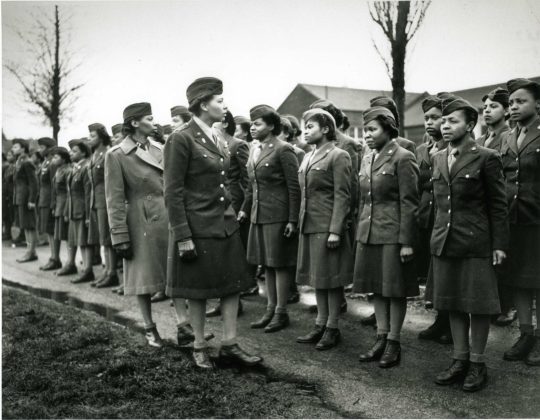


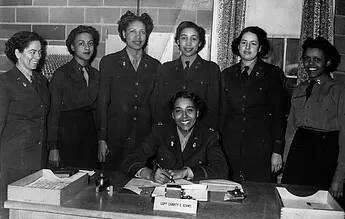
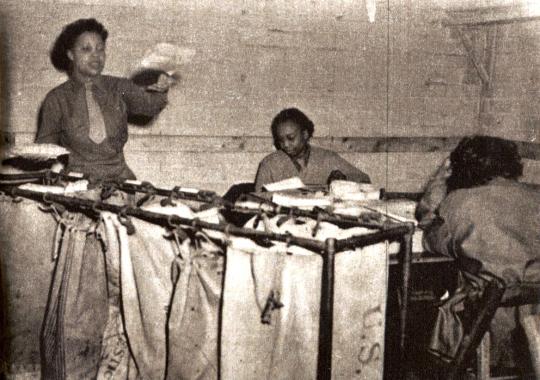


#wwii#women in wwii#wac#women's army corps#six triple eight#6888th postal battalion#black history#badass women in history#mod post
295 notes
·
View notes
Text

The embroidered chemise of St. Balthild, an 7th century Anglo-Saxon noblewoman sold into slavery in the house of Frankish king Clovis II, who eventually married her, making her queen of Neustria and Burgundy, and later queen-regent for her three sons. Balthild used her position to abolish Christian slave-trading in her kingdom, as well as buying many slaves to free them.
She established several religious institutions, including the abbeys of Chelles and Corbie, which became renowned as centers of learning in Medieval Europe. She retired to Chelles during the reign of her third son, Theodoric III, and died in 680; she would be canonized some 200 years later.
The chemise may have been embroidered by Balthild herself in her time at the abbey; the designs mimic the jewels she would have worn as queen, but embroidered in silk rather than gold thread, with the garment itself made of plain linen.

During the French Revolution, Chelles Abbey hid its relics in a nearby church, where they weren't discovered until 1983. Among them were Balthild's chemise, along with the remains of the queen herself; her burial garments weren't as well-preserved, but did include a silken girdle woven in striking scarlet and gold.
211 notes
·
View notes
Text
"In the mid-1700s, a seawoman in Iceland named Björg Einarsdóttir composed a poem teasing men on her boat for their weak rowing:
Do row better my dear man,
Fear not to hurt the ocean.
Set your shoulders if you can
Into harder motion.
Einarsdóttir was not only a talented poet but an excellent fisher. She often caught more fish than other crew members, and people believed that her ability to lure the animals was supernatural. When she was dying, she reportedly passed on this uncanny skill to a farmer by writing a poem about him catching trout.
Her work at sea may seem unusual. After all, fishing is generally considered a man’s job. But recent work by an American researcher, Margaret Willson, suggests that Einarsdóttir was one of hundreds of Icelandic women in the 18th and 19th centuries who braved towering waves and icy waters to catch fish. Willson’s team combed through historical archives and publications to gather examples ranging from a female captain who led crews made up entirely of women, to expectant mothers who rowed late into pregnancy.
The sea “wasn’t a male space,” says Willson, a cultural anthropologist at the University of Washington in Seattle and a former seawoman. “It was not a feminist act in any way for them to go to sea.” It was just part of everyday life."
#history#women in history#women's history#women's history month#seawomen#iceland#icelandic history#18th century#19th century#working women#badass women#Björg Einarsdóttir
220 notes
·
View notes
Text
“I want a story where the villain is the main character”
Megamind
“I want a story where the villain defeats the hero”
Megamind
“I want a story where the hero says fuck it and just gives up”
MEGAMIND
“I want a story where the villain gets the girl”
MEGAMIND. YOU WANT MEGAMIND.
#megamind#also it has like the best opening scene in cinematic history#even fate picks it’s favorites#is such a badass line
216 notes
·
View notes
Text
I was going through my great grandfather's memoirs (born 3 March 1880) and came across this part, which feels eerily similar to our current times:
Our biggest handicap was the Spanish Flu epidemic of 1918. With men off sick we were lucky to have 50 staff. Some would come back and more would go off. I was off two weeks myself. There were many deaths in the city.
The war was over and the men were returning from France. We were working a fifty hour week. With the men returning, the trend was to repress wages and frown on a reduction of working hours. My responsibility had been increased so as I was next to the superintendent. This was fine, except my wages were the same as the day I started. They said, "You are doing a good job, but with the men returning that is all we can pay you." There was general upset. The returned men were dissatisfied with the wages offered, not only with our company and the warehouse business, but with what was being offered in general.
He then goes on to explain how they met with the Trade and Labour Council to form a union and present their demands (which were union recognition, basic wage of $180.00 a month, an eight hour day in a year's time, and a two year contract), but it all went to hell because of spies reporting back to the bosses and scabs who refused to honour the strike.
After the second day they flooded back like sheep. At Ashdown the travellers and buyers worked the warehouse without interruption of service. The strike was a washout. I was out of a job!
The night before the strike was scheduled to start the bosses even resorted to the closest they had to social media 105 years ago.
The Evening paper carried an advertisement, by all companies concerned, advising that all employees absent from work for three days, would be discharged.
(The memoirs are 180 typed pages, so I may post more bits as they catch my eye)
#Canadian history#strike#solidarity#history is an ever repeating cycle#personal#memoirs#Great grandpa was an awesome dude#absolute badass#unrelated but his grandfather - so my great great great grandfather?#was a WEAVER in the New England States woolen mills before they moved to Canada in the 'early part of the nineteenth century'
208 notes
·
View notes
Text
All the problems in the Mandalorian could’ve been solved if Sabine had kept the Darksaber
#that girl could use it#Gideon shows up like surrender or we’ll bomb Mandalore and she’s just like ‘nah’ and whistles for Ezra and his Purgil#she’d wipe out all the imperials in the sector with homemade bombs 1000x more effective than the empire’s and paint gorgeous murals about it#could totally see her working with Luke and Ezra to build a the New Jedi Order on Mandalore#creating a culture of the most badass light side users in galactic history#man I love writing banger fanfic ideas in the tags and never using them#star wars#Mandalorians#sabine rebels#Sabine wren#Mand’alor Sabine wren#Mand’alor Sabine#the darksaber#darksaber#the Mandalorian
311 notes
·
View notes
Text

Today in Hip Hop History:
Joey Badass was born January 20, 1995
#today in hip hop history#todayinhiphophistory#hiphop#hip-hop#hip hop#hip hop music#hip hop history#music#history#hip hop culture#music history#joey bada$$#joey badass#bornday#borthday#emcee#mc#rap#rapper#pro era#brooklyn#1995#95
80 notes
·
View notes
Text









badass women of history ↝ sayyida al hurra, the pirate queen of morocco
sayyida al hurra, real name lalla aicha bint ali ibn rashid al-alami, was hakimat titwan between 1515–1542 and a moroccan privateer leader during the early 16th century. she became the wife of the wattasid sultan ahmad ibn muhammad.
#sayyida al hurra#historyedit#historicaledit#history edit#historical edit#badass women of history#bwoh#morocco#moroccan history#women in history#historyedit*#moodboard#moodboard*#mine
97 notes
·
View notes
Text
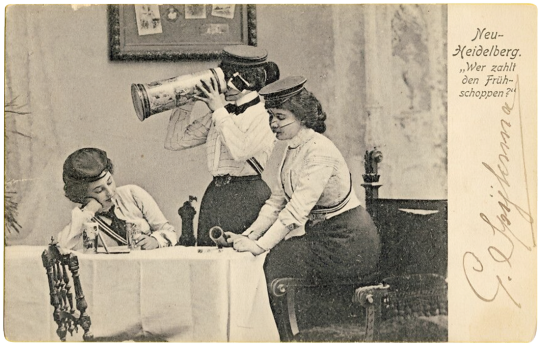
Circa 1900s postcard of university girls being girls: smoking, drinking, fighting, gambling and asking the important questions, namely: "Wer zahlt den Früh-schoppen?" ("Who's paying for the morning pint?")
#the scars and bandage are references to Mensur (academic fencing)#maybe the original joke’s meant to be on them (girls acting like boys—how absurd! 🧐) but it’s belied by how badass they look#too cool to be denied school#1900s#turn of the century#early 20th century#1900s fashion#historical fashion#fashion history#studentika#mensur#uniforms#vintage photography#postcard#vintage postcard
184 notes
·
View notes
Text
Flying Sparks - A Novel - A Lost Boy, A Freak Storm, An Alien Warrior, Two Worlds Colliding
youtube
#ScienceFiction #SciFi #Book #Reading #BettyAdams
Amazon
B&N
https://www.barnesandnoble.com/s/%22Betty%20Adams%22?Ntk=P_key_Contributor_List&Ns=P_Sales_Rank&Ntx=mode+matchall
Kobo
Google
Signed
youtube
#science fiction#youtube#dying embers#writing#book#books#sci-fi#betty adams#story#Flying Sparks#aliens#earth#first contact#hurt/comfort#Dying Embers#Betty Adams#Alternate History#Found Family#SciFi#Science Fiction#Aliens#Pack#Wolves#Badass#Misunderstandings#slow build#soulmates#Cuddling & Snuggling#shapeshifting#Harm to Children
53 notes
·
View notes
Text
Why Isn’t Thetis Remembered As Medusa Is?
A woman so devoted to her god/goddess (Zeus and Athena respectively) that they’ve given selflessly and wholly to them, only to be repaid in rape and despair. Both pursued by Poseidon. Both intimately involved in the stories of two of the most prominent and powerful heroes in all Greek mythology (Achilles and Perseus respectively), both ultimately coming to an unhappy ending because of said heroes (Achilles’ death and Medusa’s death at the hands of Perseus). Both seem to exist peacefully and with devoted reverence to the gods only to be persecuted by the very gods who they’d demonstrated their allegiance to.
It just fills me with a pang of deep sorrow that Thetis is remembered simply as “Achilles’ mother,” and not for the many incredible myths she’s had a hand in.
#She is the foster daughter of Hera and was raised by her#Many sources list Thetis as “the greatest of the Nereids”#Meaning that she most likely was greatly revered back in the day#She saved Hephestaus after his great fall and raised him#She also raised Dionysus and protected him#She summoned the Hundred Hander Briareus to break the chains Hera had placed on Zeus when she overthrew him#This is all besides her Homeric arc#But that is also badass#Anyways y’all we gotta remember this lady as more than the unearthly mom of Achilles#She’s a dynamic character all by herself#Thetis#ancient greece#ancient greek mythology#ancient history
33 notes
·
View notes
Text
I think what my preference for CQL boils down to is that, for all its inconsistency, it truly seems to cherish all of its characters. Some of that is because it’s live-action media and cherishing your character (which is not the same as liking them, and certainly not the same as agreeing with them) is your job as an actor, but the adaptation itself really devotes itself to its supporting cast. It falls short in some regards, but every character is valued for what they have to offer the story. I do not feel that this is true for the other canons. The novel cares about its cast, but WWX takes priority—and of course he does, it’s his story! His romance story, even! I don’t begrudge it that; it’s just not my thing. The manhua and donghua, meanwhile, sound aggressively disinterested in the supporting characters, and flatten or obliterate all the lovely background stories that don’t directly impact Wangxian’s romance, including what Wangxian have going on outside of each other.
#the whole Thing with WZL and YZY is a great example of what I mean#that didn’t NEED to be there! it isn’t critical to anything in the plot#but it’s there anyway! these two characters who are only in a few episodes have this whole unspoken history separate from everything else#we get that little shot of WZL glancing back at YZY’s body snd knowingly drugging himself#because the show wanted him to be a person with interiority and not just WC’s henchman or a badass miniboss#even though that depth doesn’t serve a practical purpose and nobody in-universe is even aware of it
53 notes
·
View notes
Photo

(Photo: Carmen Escobar Carrio)
Juana Galán - Heroic guerrillera
When the French invaded Spain during the Peninsular War, some women were determined to resist. Among them was Juana Galán (1787-1812), the daughter of a prosperous tavern keeper.
On June 6, 1808, a column of 1,000 enemy troops attacked the town of Valdepeñas. Juana rallied the townswomen under her command. They manned the windows and threw boiling water and oil at the enemy.
Juana went to the street armed with a club. She reportedly pulled several French soldiers from their horses and dispatched them with a blow to the head. The townspeople’s fierce resistance forced the French to retreat and never return.
Juana didn’t live to see the end of the war. She died in 1812 while giving birth to her daughter. Her legacy lives on and she was made a local heroine and a symbol of resistance. She now has her own monument in Valdepeñas.
Like Juana, other women fought in desperate situations or during riots, sometimes with improvised weapons. In 1809, an unnamed woman armed with a sword rallied the inhabitants of Penafiel (northern Portugal) and led them in battle against the raiders. In 1811, María Marcos, a tavern keeper from La Palma del Condado, played a key role in repelling a small group of French soldiers.
There were also cases of women involved in guerrilla warfare. The Catalan Somatén, a paramilitary defense organization, had female members such as María Escoplé, Magdalena Bofill, Margarita Tona, María Catalina and Catalina Martín. Francisca de la Puerta reportedly fought in Extremadura and commissioned the Junta of her province for permission to form her own guerrilla band.
Wanting to avenge her father and brother, Martina de Ibaibarriaga Elorriagafora disguised herself as a man and led a guerrilla band until she gained a commission in the Spanish army. An unnamed woman was given the command of a troop by the Junta of Molina de Aragón in 1809. A British officer also mentioned women serving with bands of irregulars as active combatants.
For more heroines of the Peninsular War, see Agustina de Aragón.
Feel free to check out my Ko-Fi if you want to support me!
Further reading
Esdaile Charles J., Women in the Peninsular War
Sheldon Natasha, “Juana Galan: A Spanish Heroine of the Peninsula War”
#Juana Galán#history#women in history#spain#spanish history#peninsular war#napoleonic wars#19th century#women's history#warrior women#war#women warriors#historyblr#badass women#historicwomendaily#historical ladies#warriors
68 notes
·
View notes
Text
I doodled Iyer, Winterlich and Co. at work and am quite proud of it, so behold my favourite travelling merchants

#they were fun to draw#eisen was supposed to look irritated but turned out pretty badass and I really love it#the kingmaker histories podcast#the kingmaker histories
43 notes
·
View notes
